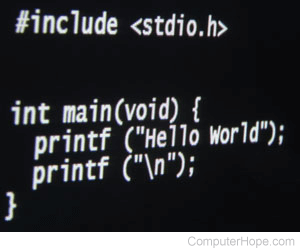Low-level language

A low-level language is a programming language that provides little or no abstraction of programming concepts and is close to writing actual machine instructions. Two examples of low-level languages are assembly and machine code.
Uses and other information
Low-level languages are useful because programs written in them can be crafted to run very fast and with a very minimal memory footprint. However, they are considered harder to utilize because they require a deeper knowledge of machine language.
Is C or C++ a low-level language?

The C and C++ programming languages are considered middle-level languages. They provide a minimal amount of abstraction at the smallest possible cost to performance and efficiency. These abstractions, such as classes, lambda functions, and macros, allow programmers to use complex functionality without writing overly complex code that would be required with machine code. For this reason, C and C++ are considered lower-level languages where abstractions are necessary to keep code highly readable and maintainable, but where maximum performance is paramount.
1GL, Binary, High-level language, Programming terms, Special purpose language
